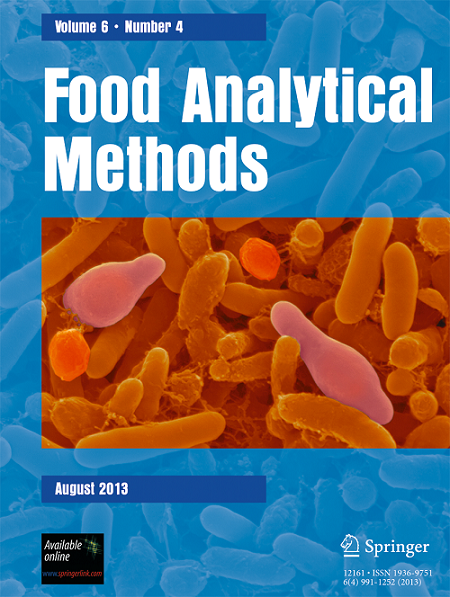Development of a Method for the Rapid Determination of 17 Veterinary Drug Residues in Foods of Animal Origin by UPLC-MS/MS Combined with Pass-Through SPE Cartridge
Abstract
In this study, a method was developed for the rapid determination of 17 veterinary drug residues in foods of animal origin using pass-through solid-phase extraction (SPE) coupled with ultra–high-performance liquid chromatography-tandem mass spectrometry (UPLC-MS/MS). Two grams of the sample was extracted ussing 8 mL of acetonitrile to water (85:15). An Oasis® HLB cartridge was selected for the clean-up of the sample without activation/calibration and elution. The separation was performed on an Acquity UPLC HSS T3 column (2.1 mm*100 mm, 1.8 μm) with a gradient elution using methanol–0.2% formic acid aqueous solution as the mobile phase. The analytes were detected in polarity switching electrospray ionization (ESI + / −) and multiple reaction monitoring (MRM) modes. The quantification was conducted using a matrix-matched standard solution external standard method. The performance of the employed UPLC-MS/MS method was observed to be satisfactory. The recoveries of the tests were within the range of 65.1–114.4%, with the relative standard deviations (RSDs) being lower than 12.3%. The limits of quantification (LOQs) of the target compounds ranged from 0.3 to 2.0 μg/kg (S/N ≥ 10), which complied with the relevant matrix limits mentioned in the food safety standards of Korea, the United States, and Canada in recent years. Positive samples of pentetrazol were identified in two batches of fish and one batch of chicken. However, the levels did not exceed the maximum residue level (MRL). This method has been successfully employed for the detection of a number of food products of animal origin in the local market, providing a methodological reference in cross-border food safety and testing.

 求助内容:
求助内容: 应助结果提醒方式:
应助结果提醒方式:


